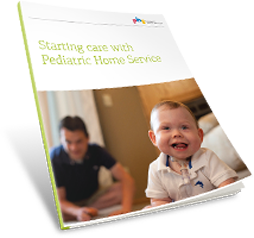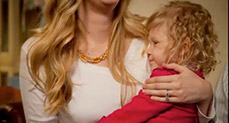A Parent’s Perspective: Coordinating A Team Of Caregivers
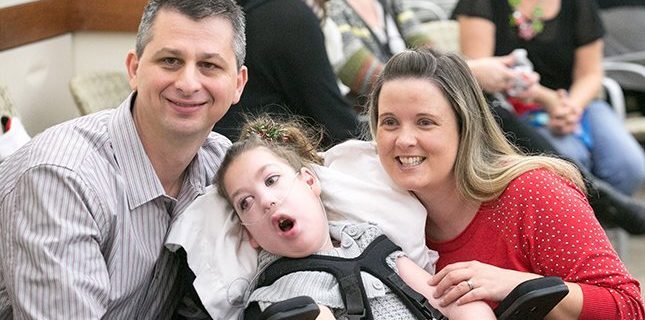
Marty Barnes, the writer and mother behind CaseyBarnes.org, will talk today about coordinating the caregivers in her daughter’s life in the third of a five-part series. You can find the previous posts about starting home care nursing, and getting night nursing. Be sure to check back in each month as she talks more about the advice and knowledge they’ve gathered over the years!
Marty and her husband Tim have been married since 2005 and welcomed their only child in 2006. Marty’s daughter, Casey, was born with a severe brain injury (that includes MANY complications). She has defied all odds since day one. Casey loves to sing, dance, do arts and crafts, swim, watch movies and snuggle. She is nonverbal…but VERY good at making her point. Every day with her is a gift and an adventure.
Marty is very active in the special needs community, virtual as well as physical. Each year Marty and her family host holiday parties for local central Texas families with children that have special needs. Marty also has many tools and resources that she has developed over the years to help other families like hers. These tools are available on Casey’s website for anyone that is interested.
When we first started home care nursing, we were able to fill all of our hours with one nurse. However, as we added more shifts (day and night), we also had to add more staff. Building a team and everyone working together is crucial. We encourage our nurses to not only chart what is required by the agency, but we also encourage them to talk to each other. We keep all of their phone numbers listed with the current schedule and we encourage them to talk to each other about schedule changes, changes in the plan of care, or anything.
Write it down
We have a few communication stations throughout the house. We have a PRN whiteboard on the fridge. Yes, they also mark the medications given on the MAR, but the whiteboard is a quick and easy way for them, us, and anyone to see which PRN medications Casey has had and/or may have at a given time. We have another whiteboard also on the fridge for notes and needs. The top section is used to make sure everyone sees any changes in doses, new medications, new concerns, therapy schedule changes, upcoming appointments, etc. Then the needs section makes it easy for me to know to pick up next time I am out (Benadryl, hand soap, toilet paper, lotion).
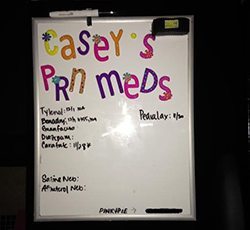 In our supply closet we keep a chart that shows all of the monthly and PRN supplies, when they were last filled, and how to get more. On the other side of the supply closet we keep a task chart. There are some tasks that are done as time allows (soaking syringes, cleaning the concentrator filters, restocking the mini-supply stations, and a few others). We know some days Casey requires 100% of the nurses’ attention, but on other days there is some down time. During this down time our nurses are great about helping out with these tasks. In order to make sure it’s not the same tasks every time, but that all get rotated and done, they write down the date most recently completed.
In our supply closet we keep a chart that shows all of the monthly and PRN supplies, when they were last filled, and how to get more. On the other side of the supply closet we keep a task chart. There are some tasks that are done as time allows (soaking syringes, cleaning the concentrator filters, restocking the mini-supply stations, and a few others). We know some days Casey requires 100% of the nurses’ attention, but on other days there is some down time. During this down time our nurses are great about helping out with these tasks. In order to make sure it’s not the same tasks every time, but that all get rotated and done, they write down the date most recently completed.
Keeping everyone on the same page
In addition to our home health team, we also have a large team of doctors, their staff, therapists, teachers, social workers, case managers, and I am sure I’m missing someone. We work hard to make sure that our home team and our external care team talk to each other as well. Our external care team meets our home team at appointments. When we have to call things in, I make sure to cc the nurses on emails or pass the phone to them for the official orders.
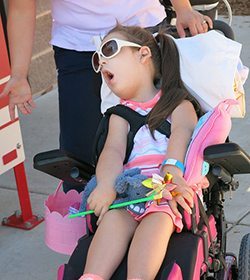 There are times when our home nurses help out and call the clinics for us about a concern, they may call the DME company to get supplies, they may have to call and reschedule an appointment if something comes up and I cannot take care of it. We encourage our team to all work together.
There are times when our home nurses help out and call the clinics for us about a concern, they may call the DME company to get supplies, they may have to call and reschedule an appointment if something comes up and I cannot take care of it. We encourage our team to all work together.
At least once a year, sometimes more, we have a care conference. Most of our external care team will all come together in a room (or on the phone) to take a collaborative approach to any concerns we have. With Casey having so many medical complications, it is easy for something to fix one thing but break something else. Having everyone work together to make sure the plan put in place is best for Casey makes a huge difference. Our home team is usually in these meetings as well. We like to have them there to be sure they can address concerns they may have since they will be carrying out the plan of care.
A little work goes a long way
It can seem like a lot of extra work to coordinate all of the different members of our care team (especially since it continues to grow). I have found this extra effort is totally worth it. If your team is not talking to each other and on the same page, the quality of care will quickly decline. Whether your team is only a few individuals or enough to start a football team, teamwork is very important. If we have a nurse that does not work well with the team we don’t keep them. Casey is the team captain, and we all have to play together.
Originally published: February 11, 2016